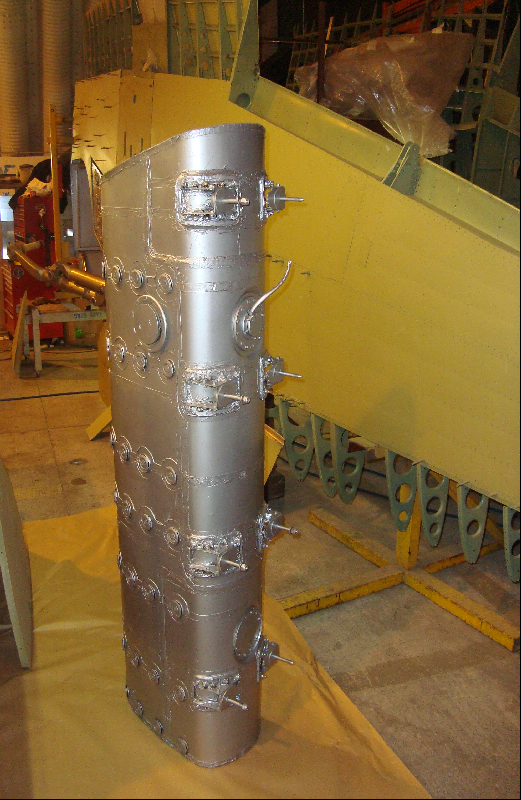Tommy Cookers wrote: ↑17 Jul 2022, 16:45
J.A.W. wrote: ↑11 Jun 2022, 02:07
... most probably it'd be based on historical NACA 'L-F' profiles
being duly developed post-consultation with NPL's B. Melvill-Jones, who'd presented 'L-F'
findings in the inaugural 'Wright Brothers Lecture' at Columbia University on 17/12/37.
... S. Camm utilised such NPL profiles in production of the 'Hawker high-speed wing' per Tempest/Fury)
it (the Tempest aerofoil) is nothing like NACA LF
implying that Hawker weren't in March 1940 given the NACA LF airfoil that the BPC was then buying in the Mustang
and being unusually thick towards the TE it's rather different also to the NPL LF aerofoil used later on the Spiteful
the rear thickness could alleviate structurally the aeroelastic disadvantage otherwise of this overall thinner wing
the entire Tempest LF myth/legend comes from the 12 (small) page Profile Publications partwork no 197 of c.1967
this being the Francis K Mason 'book' that is the only bibliography source given by all the later legion of authors
Mason gave no source for his LF story
was he also expert on c.63 other aircraft that he described in the 12 small page format for PP ?
and the legion of Tempest authors seems to know and care nothing about any NPL contact with Hawker
Roland Beamont, Eric Brown and Morien Morgan never called the Tempest LF - and that's good enough for me
the E28/39 work showed that NPL's (like NACA's) predictions of LF relieving compressibility and drag were incorrect
but of course their prediction of greatly reduced L/D ratio at large lift coefficients was correct ....
that's why the Spitfire's sustained climb and sustained turn were never equalled
LF was flattered by being mostly used at low altitudes and correspondingly low lift coefficients
T-C, per the quote clip (1st line of your post), I was referring to the P-63, which featured a later type
of NACA 'L-F' profile, the development of which stemmed from earlier work per NPL/NACA data sharing.
The Hawker 'High-speed wing' profile ('L-F' conforming - according to Lednicer & others), was derived
from NPL studies in the UK, while the original Mustang wing was a NAA profile worked up from NACA
research, it is incorrect to claim one was directly related to the other, (except from a basis of NPL
data exchange with NACA in the late 1930s), as previously noted...
Of course the practical effect of 'L-F' profiles in high speed regimes meant that the palliatives of
'dive brakes' as applied to P-38/P-47 were not needed by P-51/Tempest, (while the Spitfire did need
significant structural changes to its wing, & was Vne 'placarded' well below 500mph during wartime).
Drag reduction per 'L-F' is a fact, speed/~power-settings/dive-zoom comparisons clearly proved this.
As for the Spitfire's sustained climb & turn performance, this is largely a factor of wing area/power-
to-weight, something the Mitsubishi Type 0 pilots showed the Spitfire Mk V trop-jockeys to their shock
in combat over Northern Australia, no less than FW 190 pilots had proved* that in air-combat evolutions
with Spitfire V's over the English Channel that mere turning contests were not a be & end all, either...
*Just as that AFDU Typhoon VS Spitfire V combat trial (linked earlier) had also demonstrated.

